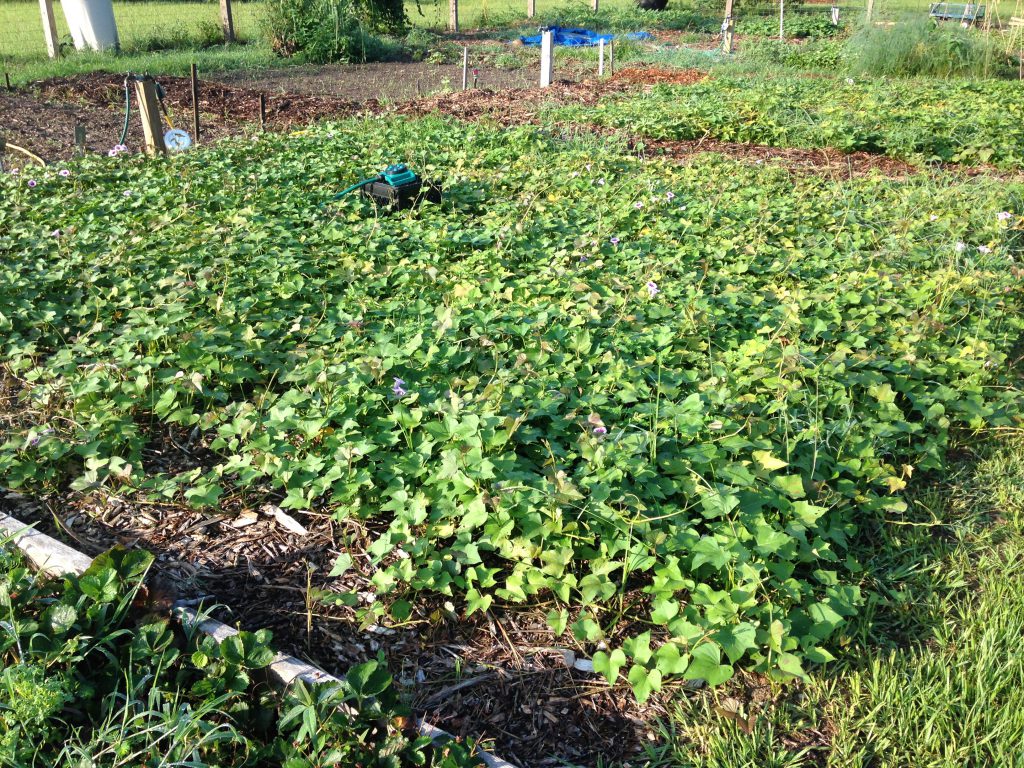
Sweet potatoes are ideal for filling the gap between summer and fall crops as they have a long growing season. Photo by Janis Piotrowski.
Take the Summer Off, Grow a Cover Crop
As gardeners in the northern states plant and harvest crops until fall, those in the south know that summers can be brutal. In Florida and other areas in the deep south, temperatures can reach triple digits by the summer solstice, and humidity can make it feel like you’re swimming through the air. Pests, from mosquitos to stink bugs, descend quickly, making it no fun to spend hours weeding and watering in the sweltering heat, only to watch your plants struggle to survive. This is why we take advantage of the summer swelter by relaxing with some ice-cold lemonade and enjoying a well-deserved break.
However, while we take a summer gardening hiatus, it’s essential not to leave our soil bare. Fallow soil can become compacted and lose its structure, as there are no roots to create air channels that allow water from frequent summer storms to penetrate the soil. This makes it more challenging for plants to grow in upcoming seasons and can lead to erosion, nutrient depletion, and weed growth. By planting cover crops during the off-season, gardeners can prevent these issues and improve the health of their soil for fall planting. Cover crops offer a multitude of benefits, such as adding nitrogen to the soil, increasing organic matter content, suppressing weeds, breaking pest and disease cycles, and even providing a crop to harvest in the fall.
Fix Nitrogen with Legumes
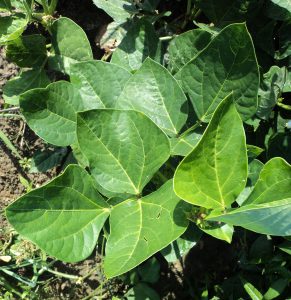
Cowpea is a summer annual legume that can fix nitrogen, improving soil fertility for fall crops. Photo by Michasia Dowdy, University of Georgia, Bugwood.org.
Summer cover crops are a great way to keep your garden healthy and productive during the off-season, and leguminous crops like cowpeas, soybeans, and sunn hemp can add an extra boost to your soil’s fertility. These legumes have a unique ability to form a symbiotic relationship with nitrogen-fixing bacteria in the soil, allowing them to convert atmospheric nitrogen into a form that plants can use for growth.
Apart from their nitrogen-fixing properties, leguminous cover crops also have deep taproots that can help to break up compacted soil, improve water infiltration, and reduce soil erosion. When planted in dense stands, they can even suppress weed growth, making it easier to maintain your garden’s health.
It’s important to remember to terminate your leguminous cover crops at the bloom stage, as this is when the nitrogen-fixing nodules on the roots are at their peak. By cutting them down at this point, you can help to release the fixed nitrogen back into the soil, where it will be available for future crop use.
Increase Organic Matter with Buckwheat
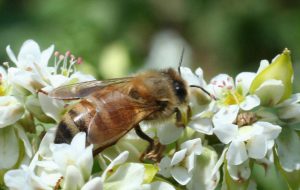
Buckwheat not only builds organic matter in soil but it also attracts pollinators. Photo by Russ Ottens, University of Georgia, Bugwood.org.
Buckwheat is an ideal summer cover crop for gardens with poor, sandy soil. It is a rapid grower and can produce a large amount of biomass in a short period of time, which can be used to increase soil organic matter content, improving soil structure. The cover crop’s dense, fibrous root system provides ample surface area for nutrient uptake and helps prevents erosion.
Another major benefit of planting buckwheat is its ability to attract beneficial insects, particularly pollinators like bees and butterflies, which can help increase the yield of crops that rely on pollination for fruit set. Additionally, buckwheat is known for attracting predatory wasps, which can help control insect pests. Buckwheat also has the ability to scavenge phosphorus from the soil, making it available for other crops.
To prevent buckwheat from becoming weedy, it is important to terminate it before it goes to seed. This can be achieved by chopping it down when it starts to flower and leaving it to decompose in place.
Suppress Nematodes with Marigolds
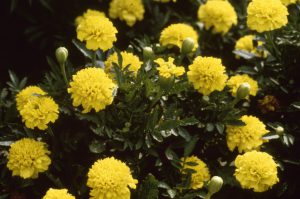
French marigolds can help suppress root-knot nematodes. Photo by North Carolina, USDA APHIS PPQ, Bugwood.org.
Nematodes are microscopic, unsegmented roundworms that can be either be free-living or plant parasites. Among them, the plant-parasitic species, such as the root-knot nematodes, can cause severe damage to crops and even lead to their demise. They are difficult to control as they reside underground or inside plants, and nematicides are not easily available to home gardeners.
However, planting cover crops like African or French marigolds before the main crop can significantly reduce nematode populations. These marigolds release alpha-terthienyl, which suppresses not only root-knot nematodes but also other disease-causing organisms.
Apart from marigolds, several other summer cover crops like sunn hemp and velvetbean can also suppress nematodes, especially for root-knot and sting nematode control.
Cover Crops for the Dinner Table
Growing cover crops that serve a dual purpose of providing ground cover during the hottest months and yielding edible produce in the fall is an excellent way to make the most of garden space. Some examples of such crops are sweet potatoes, field peas, and daikon radishes.
Sweet potatoes are ideal for filling the gap between summer and fall crops as they have a long growing season. They have a deep root system that helps break up compacted soil, and their vines provide ground cover, reducing soil erosion. In the fall, their tubers can be harvested after the leaves have died back to make a nutritious and delicious addition to any meal.
Field peas are a versatile crop that not only provide benefits to the soil as nitrogen fixers and ground covers but also offer delicious edible pods if allowed to develop. There are many types of field peas for which to choose, including black-eyed peas, crowder peas, and cream peas. Pods can be harvested in the fall and used to enhance the flavor of stews, salads, and soups.
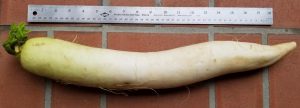
Daikon radishes are an excellent cover crop that grow deep to break up soil and they have plenty of flavor for the dinner table. Photo by
Guodong Liu, UF/IFAS.
Daikon radishes have a deep taproot that can help break up compacted soil, and their foliage can help suppress weed growth. In addition, daikon radishes can be harvested in the fall and can be used in a variety of dishes such as soups, salads, and stir-fries.
Timing is Everything
To make the most of your summer gardening break, plant cover crops as soon as you conclude your spring harvest, typically from late May through early July. Scatter the seeds evenly over the bed and lightly rake them into the soil. It is important to keep the soil moist during the germination period, which typically lasts four to 10 days depending on the crop.
Regular monitoring of your cover crops as they grow is essential to ensure they are terminated at the appropriate time, preventing them from becoming weeds and competing with other crops. Once terminated, you can leave the cover crop residue on the soil surface as a mulch or incorporate it into the soil.
So, this summer, stay cool and let your cover crops take the heat as they improve soil fertility, increase organic matter, prevent erosion, suppress nematodes, reduce weeds, and even provide food for a fall harvest.
- Dung Beetles of the Florida Panhandle - June 26, 2025
- Summer Veggies That Can Take The Heat - May 15, 2025
- Stopping Tomato Blossom-End Rot Before It Starts - April 3, 2025
